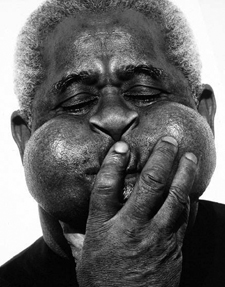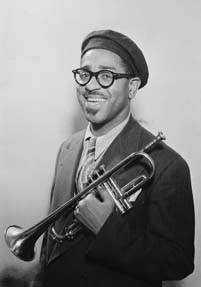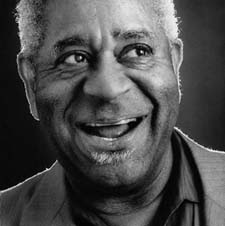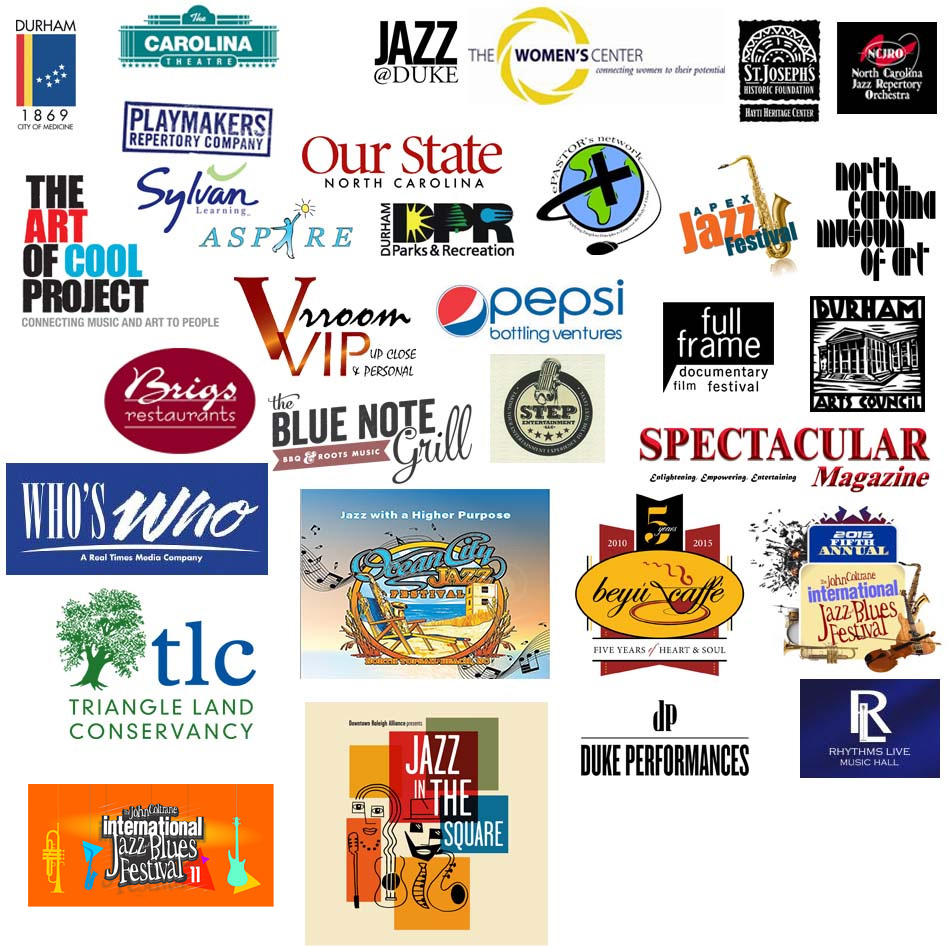Dizzy Gillespie
 With his great ballooning cheeks and trademark trumpet’s bell upturned at a 45-degree angle, Dizzy Gillespie easily has the most recognizable face in jazz.
With his great ballooning cheeks and trademark trumpet’s bell upturned at a 45-degree angle, Dizzy Gillespie easily has the most recognizable face in jazz.
Born John Birks Gillespie, Dizzy moved to Philadelphia with his family at age 18 and joined Frankie Fairfax’s band before moving on to New York City where he joined Teddy Hill’s big band in 1937. Later he played with all of the greats including Ella Fitzgerald. Duke Ellington, Lionel Hampton, Earl Hines, and Billie Holliday. He met saxophonist Charlie “Bird” Parker in 1940 and soon was jamming with him, Thelonious Monk, and others. It was in this hothouse atmosphere of creativity that Dizzy and his cohorts astonished the world with their aggressive ornamentations, complex harmonic alterations, and rhythmic exploration that would soon be labeled “bebop.” “What they did was like nitroglycerine, electricity,” says Quincy Jones. “They broke all the rules and changed the world concert of American music.”
Not all audiences and critics fell immediately in love with these new, often strange sounds. Dizzy, however, was a natural public relations man for this music with his hair-raising technical virtuosity, harmonic adventurousness, and most of all, integrating showmanship. He was, in fact, the first jazz artist to be sent abroad under the auspices of the United States government, spreading American goodwill and good music around the world.
Dizzy’s legacy is probably best summed up by Dizzy himself in a statement that would sound a bit arrogant if it weren’t so probable: “The music of Charlie Parker and me laid a foundation for all the music that is being played now. . . . Our music is going to be the classical music of the future.”
 And just how did Dizzy end up with that bizarre, trademark trumpet of his? The bent-bell trumpet got its start in 1953 when someone fell on his trumpet stand backstage. He liked the sound of the altered instrument so much that his trumpets were specially made from then on.
And just how did Dizzy end up with that bizarre, trademark trumpet of his? The bent-bell trumpet got its start in 1953 when someone fell on his trumpet stand backstage. He liked the sound of the altered instrument so much that his trumpets were specially made from then on.
Learn more at www.dizzygillespie.org.

